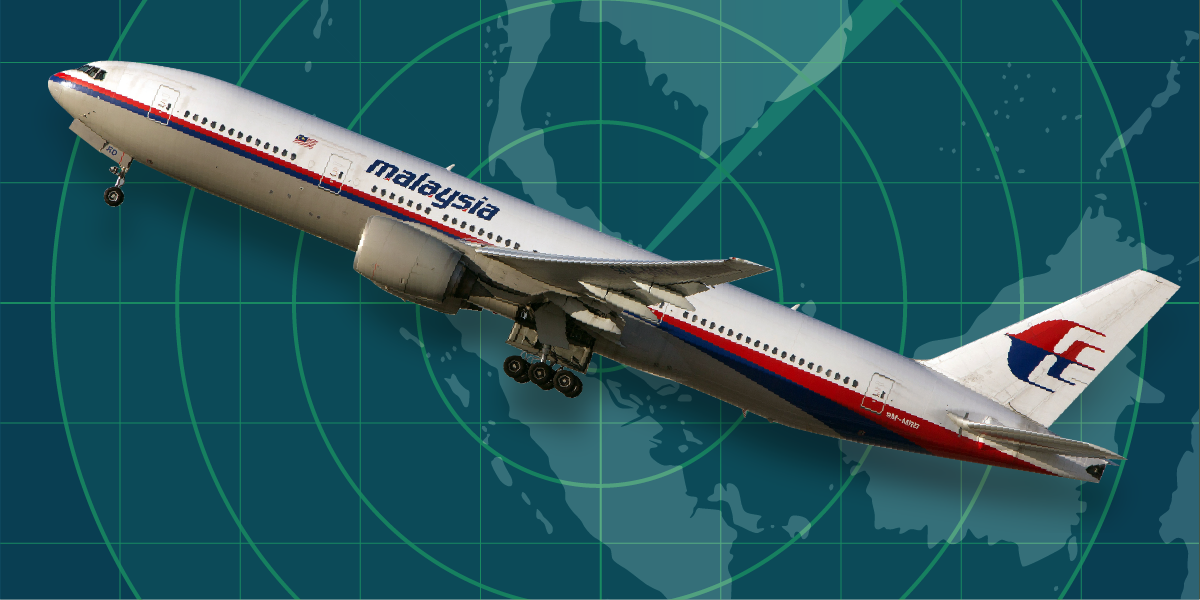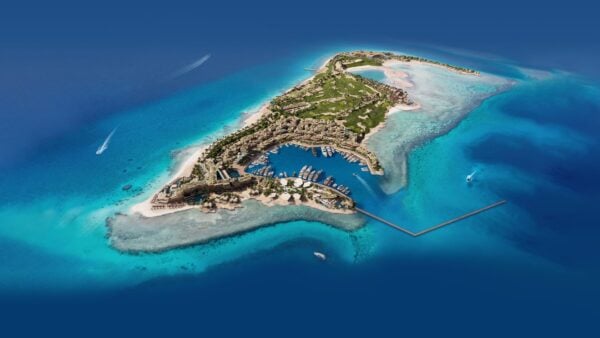- Flight MH370 disappeared more than five years ago with 239 people on board.
- It vanished on its way from Kuala Lumpur, Malaysia, to Beijing, and only fragments have ever been found.
- Years of investigations have failed to make sense of what happened to the plane.
- Conspiracy theories have grown as families of victims accuse the Malaysian government of not releasing information.
- Malaysia’s government issued a major report seeking to draw a line under the mystery, but it didn’t provide concrete answers or stop the questions.
- Visit Business Insider’s homepage for more stories.
On March 8, 2014, Malaysia Airlines Flight MH370 vanished from air-traffic-control radar screens, never to be seen again – and spawning the most incredible aviation mystery of the 21st century.
The 239 people on board were never found and are presumed dead.
Investigations dedicated to finding the plane, the victims, or any substantial evidence of what happened have come up with next to nothing, inviting speculation and conspiracy to fill the vacuum.
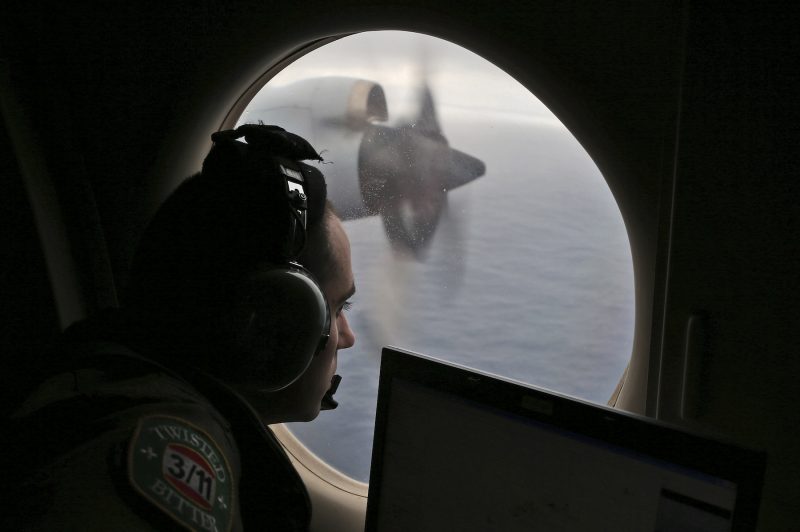
In July 2018, the Malaysian government, which has largely taken the responsibility for investigating the disappearance, issued what it said was its final report on the fate of the plane.
Malaysia's transport minister, Anthony Loke, had promised total transparency in the document, with no redactions or obfuscations. But it wasn't able to answer the fundamental question of what happened to the plane. French authorities have even started a new investigation into what really happened.
Here's what we know, what theories have been put forward, and the questions that remain.
A normal takeoff, 'good night' - then nothing
Flight MH370, a Boeing 777, left Kuala Lumpur, Malaysia, at 12:41 a.m. local time on March 8, 2014, with 239 people on board.
More than 150 passengers were Chinese. There were also 38 Malaysians, seven Indonesians, six Australians, and several passengers from a host of other countries, including France and the US. Twelve crew members were on board as well.

The final voice communication from the cockpit, less than an hour after takeoff, was "Good night, Malaysian three-seven-zero."
The plane then stopped communicating with ground control.
It deviated from its route two hours after takeoff, according to data from military radar.
For reasons still unknown, the plane abruptly turned back toward Malaysia, then on toward the Indian Ocean.
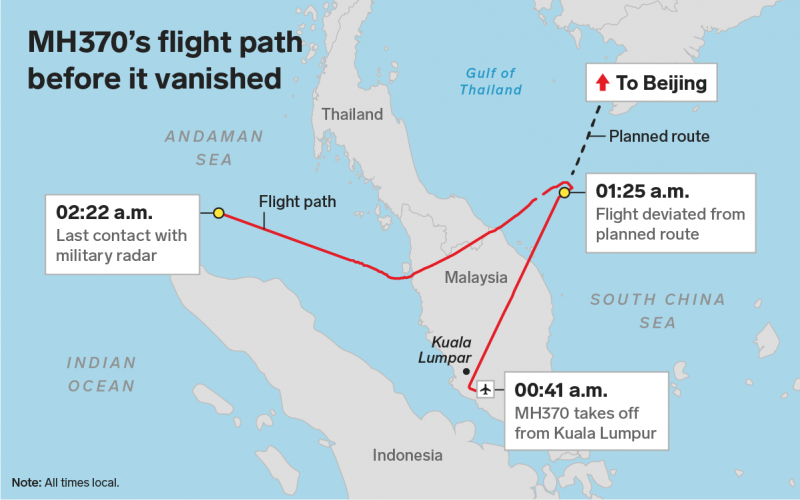
There were no reports of bad weather or distress calls.
The plane traveled south and may have changed altitude at some point. It sent a final, automated satellite communication that was received but did not contain any information about where it was.
Other aircraft communications had been purposefully disabled earlier or somehow powered down in the flight, authorities said. The plane had disappeared.
The search attempts
Search attempts were quickly launched, but investigators had little idea of where to start and a vast swathe of territory where the plane could feasibly be.
Teams from Singapore, Vietnam, and Malaysia were searching the water near Vietnam - which is partway between Kuala Lumpur and Beijing - about 12 hours after contact was lost.
FBI teams and Interpol personnel flew in to assist, with nine countries contributing to the initial search. Forty ships worked around the clock, and 34 aircraft flew during daylight hours.
A total of 26 countries eventually pitched in as the search area widened. They found nothing.
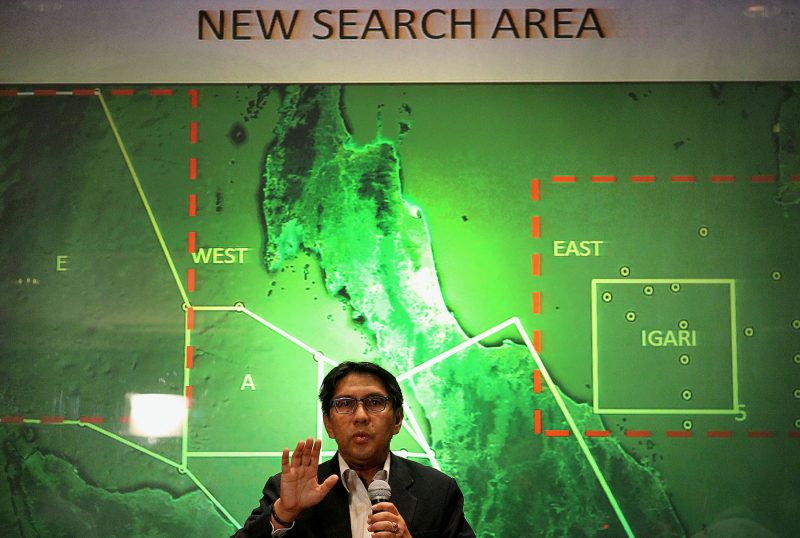
On May 5, 2014, 79 days after the plane went missing, Malaysia, Australia, and China announced their agreement to search underwater. At the request of the Malaysian government, the Australian Transport Safety Bureau led the investigation. But it discovered little.
On January 29, 2015, 327 days after the plane vanished, Malaysia officially declared the disappearance an accident.
A report one year after the disappearance "gave a detailed picture of delays and protocol violations" before the search was launched, CNN said.
It said that five hours and 13 minutes passed between the last communication from the plane and Kuala Lumpur's first distress signal and that another five hours passed before the first search flights took off, according to CNN.
The Malaysian government's final report, released on July 30, 2018, said authorities "cannot determine with any certainty" why the plane disappeared. The key finding was that the plane's sharp diversion at 1:25 a.m. was done manually, but it is still unclear who was responsible for the maneuver.
Malaysia's civil aviation chief resigned after the report found that air traffic control did not comply with standard procedures.
The first fragment
The first piece of MH370 took more than a year to find. The fragment of the plane's wing washed up in July 2015 on Réunion Island, thousands of miles from Kuala Lumpur.
After a four-month hiatus for detailed mapping of the seabed, the search resumed in October 2015, but bad weather slowed the investigation.
A report in March 2016, on the two-year anniversary of the disappearance, shed no more light on what happened.
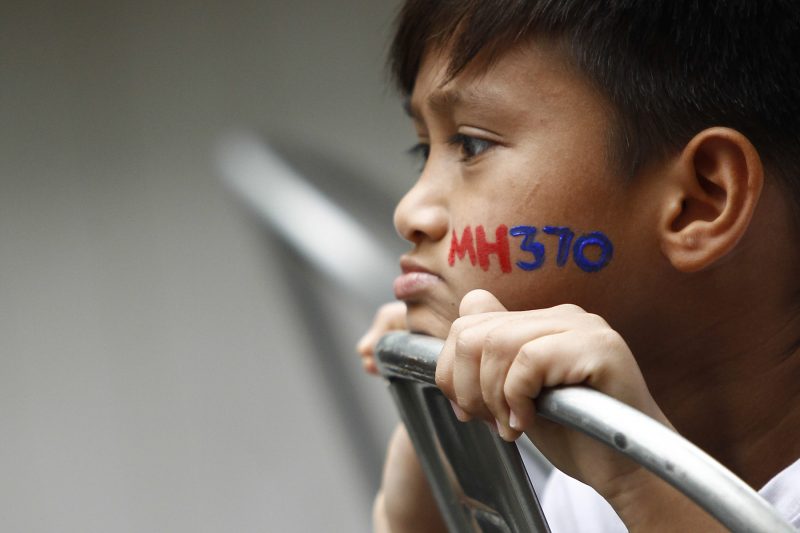
By May 2016 more than 105,000 square kilometers (65,240 square miles) of seafloor in the southern Indian Ocean had been covered, leaving 15,000 square kilometers left to search in the area.
In July 2016, the Dutch company hired by Australian authorities to lead the search said it may have been looking in the wrong area for the past two years.
The fruitless search was suspended in January 2017, after more than $140 million was spent. Officials said it was possible the crash site was farther north. Families of passengers and crew members had become so frustrated that they launched their own search for debris in Madagascar.
In the year that followed, organizations like Australia's chief science agency released reports, while analyses of satellite imagery and debris continued amid talks to formally begin a new search.
The Malaysian government started the latest search in January 2018 with Ocean Infinity, a private firm based in the US. It covered 112,000 square kilometers in the southern Indian Ocean, including a 25,000-square-kilometer target area that hadn't been searched before.
It was called off on May 29 with no new significant new findings, though investigators said they still wanted to search farther north.
In five years of searching, the only confirmed traces of the Boeing 777 aircraft have been three wing fragments that washed up on Indian Ocean coasts, in Madagascar, Réunion Island, and Tanzania.
Malaysia's prime minister, Mahathir Mohamad, has said Malaysia would consider resuming the search if there were new clues.
The theories so far
The lack of answers even as more information comes to light, combined with the fruitless searches, means all that's left are theories of what might have happened to the flight - and some are more plausible than others.
Some theories have been dismissed by authorities, but others loom large.
A theory considered by the Malaysian government and the Australian Transport Safety Bureau is that the passengers and crew of MH370 were incapacitated by an oxygen deficiency.
They speculated that everyone on the plane, including its captain, Zaharie Ahmad Shah, somehow fell unconscious. The plane would have been on autopilot until it ran out of fuel, then crashed into the sea.
Versions of this theory include a hijacking in which someone damaged the oxygen supply, or an accident that harmed the plane's mechanics and affected its oxygen levels.
In another version of this theory - described by a team of analysts on the Australian news program "60 Minutes" - Shah was the only one awake, and in a suicidal state he disabled communication before steering the plane into the ocean.
Others have posited the theory that a pilot deliberately crashed the plane. A Canadian aviation expert and former airplane-crash investigator told Canada's CBC News in May 2018 that he was certain it was a murder-suicide by a pilot.
But the July 2018 report offered evidence against the idea that it was a deliberate act by the crew.
The 495-page document said neither the pilot nor the first officer showed psychological signs suggesting they could have deliberately crashed the plane. It said that among the crew members, "there were no behavioral signs of social isolation, change in habits or interest, self-neglect, drug or alcohol abuse."
Investigators also said the crew members' movements captured on CCTV before the flight and their voices on air-traffic-control recordings did not seem any different from how they were on previous flights.
Kok Soo Chon, the lead investigator, told reporters at a press conference about the report that the crew exhibited "no anxiety or stress." He said that while the report was "not ruling out anything," it found plenty of evidence against the suicide theory.
Read more: The new MH370 report rejects the most horrific theory of all about why the plane disappeared
Christopher Goodfellow, a former pilot, has speculated that an electrical fire on the plane led pilots to turn it back toward Malaysia to find an emergency landing strip. He said the plane would have flown on autopilot as the fire incapacitated the crew and passengers.
But another pilot, Patrick Smith, said it would have been unlikely that the plane would travel for hours on autopilot after a fire. Other evidence against that theory is that the plane also turned again after heading toward Malaysia.
Smith told Business Insider in 2015 that the nature of the debris found also might suggest the plane was under control when it crashed.
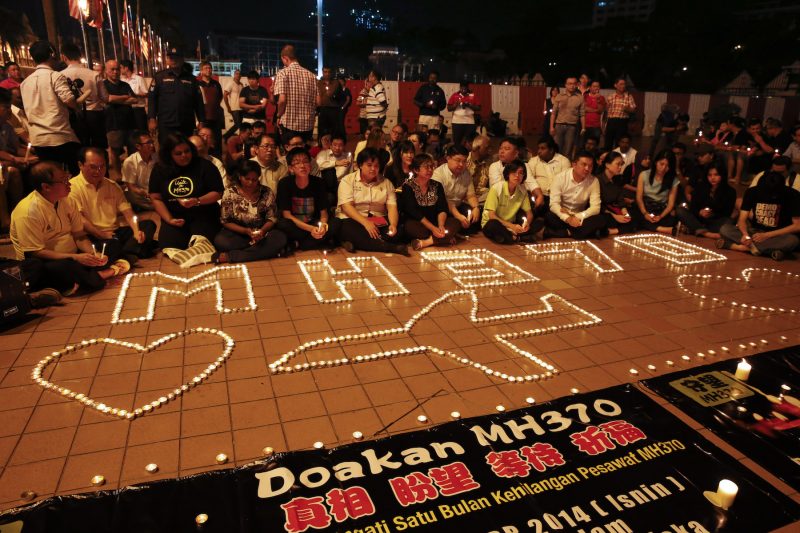
The plane might have landed gently in the water and sunk in mostly one piece. Experts have said this theory is consistent with the debris found.
Another theory is that the search was in the wrong area and that investigators should be looking north of Malaysia - perhaps the plane crashed, or perhaps it landed and was hidden somewhere. But that was rejected by Inmarsat, the British company that owned and operated the satellite that tracked MH370 until it dropped off the network.
The July 2018 report pushed back on a theory that batteries and fruit in the plane's cargo had somehow formed an explosive mixture that brought down the plane.
Other theories are that the plane was taken over remotely in a bid to foil a hijacking. Mohamad suggested this in May 2018 but did not say who he believed might have done it. The 2018 report said there was no technology on the plane that would allow control to be taken from the pilots remotely.
Details that emerged in early reports on the plane's disappearance - including that two people boarded with stolen passports and that no one seemed clear whether everyone had boarded the plane - helped conspiracy theories swirl. Conflicting accounts from officials and affected families accusing the Malaysian government of withholding information added fuel.
More outlandish theories include a remote cyber-hijacking, the plane being shot down by perhaps the US military, the idea that Russian President Vladimir Putin knows the plane's location, a mystery extra passenger taking control of the plane, a Bermuda Triangle-style area causing the plane's disappearance, and North Korea taking the plane.
Other theories blame the CIA, Israel, and aliens - all traditional bogeymen for conspiracy theorists.
Unanswered questions
Despite the efforts of one of the largest and most expensive searches, so much information remains unknown.
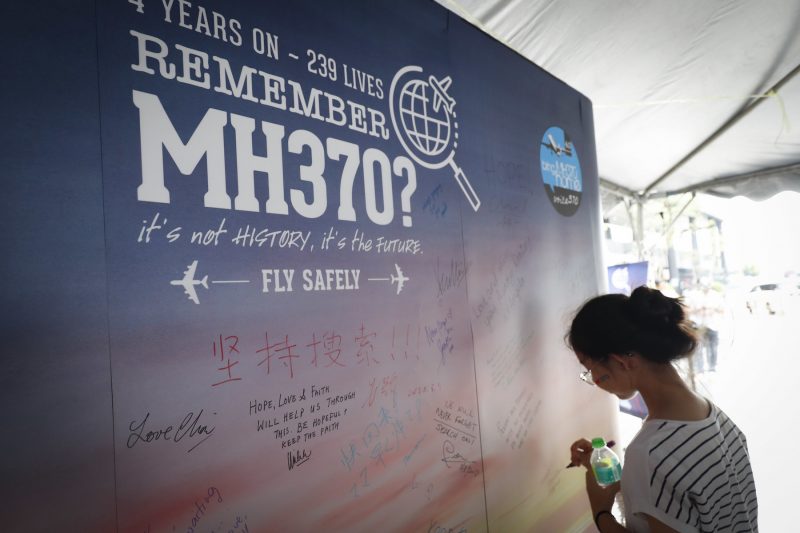
If the plane's route were to be established by a future investigation or the plane itself were to be found, it could provide clues about whether it was deliberately heading somewhere, or whether there was an accident like a loss of oxygen.
We also don't know which of the pilots was flying the plane when it disappeared, or whether it was someone else.
It may be that even if the plane is found, these questions would remain unanswered.
Relatives of the passengers and crew members had pinned their hopes on the Malaysian government's latest report. But it didn't hold the answers.

